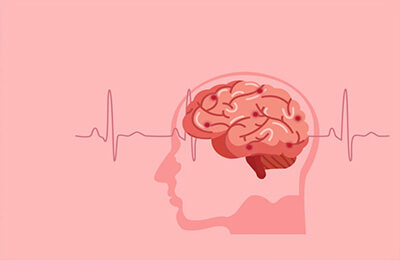小胶质细胞在缺血性脑卒中后活化特点的研究进展
时间:2022-02-28 06:27:11

[摘要] 小胶质细胞作为脑内常驻的免疫细胞,在缺血性脑卒中发生后快速活化,发挥了神经损伤和修复的双重作用,是近年来缺血性脑卒中研究的热点。研究证据表明,脑缺血后小胶质细胞的活化可呈现时间和空间的动态变化,在脑卒中的急性期、亚急性期,小胶质细胞在缺血中心区和周边区出现不同的表型,其表型的变化对缺血性脑卒中的预后产生了至关重要的影响。本文对小胶质细胞的基本特征及其在缺血性脑卒中中的表型变化进行了梳理,以期为小胶质细胞作为抗缺血性脑卒中药物研究的新靶标提供理论支撑。
[关键词] 小胶质细胞;活化;缺血性脑卒中;神经炎症
[中图分类号] R743.3 [文献标识码] A [文章编号] 1673-7210(2017)03(c)-0031-04
Research progress on activation of microglia in ischemic stroke
XIANG Bin SHEN Ting XIAO Chun LI Xiufang
Yun'nan University of Traditional Chinese Medicine, Yun'nan Province, Kunming 650500, China
[Abstract] Microglia, which is the resident immune cells in the brain, is rapidly activated after the occurrence of ischemic stroke. It plays dual roles of nerve injury and repair in the pathological process of ischemic stroke and is a research focus in ischemic stroke in recent years. After cerebral ischemia, microglia is activated rapidly, and the dynamic changes of time and space are presented in the activation process. In the acute and subacute stages of the stroke, microglia appears different phenotypes in ischemic core area and peripheral area. Research evidence shows that the phenotype changes of microglia has a significant impact on prognosis of ischemic stroke. In this paper, the basic characteristics of microglia and whose phenotype changes in ischemic stroke are sorted out, in order to provide theoretical support for the new target of the drug research about microglia in anti-ischemic stroke.
[Key words] Microglia; Activation; Ischemic stroke; Neuro-inflammation
缺血性X卒中(ischemic stroke,IS)是临床最常见的脑血管疾病之一[1-3],也是中老年人致死的第二大病因。IS的病理损伤机制极为复杂,涉及了脑细胞的能量代谢紊乱、自由基生成、细胞内钙超载、氧化应激损伤、兴奋性氨基酸毒性、炎性反应、神经细胞凋亡及坏死等多个环节。其中,IS后的神经炎症级联反应使缺血后脑损伤程度远超过缺血本身,减轻神经炎症损伤被认为是IS治疗的有效策略[4]。IS后的神经炎症主要由小胶质细胞、星形胶质细胞及浸润的外周巨噬细胞的激活所驱动。小胶质细胞是脑内常驻的免疫细胞,也是对IS损伤最早做出应答的细胞,在抵御脑损伤过程中发挥了重要作用。
1 小胶质细胞的生理学特性
小胶质细胞是中枢神经系统中固有免疫反应的典型代表,其在中枢神经系统分布较广,生理情况下其数量占脑细胞总数的5%~10%,占中枢神经系统胶质细胞总数的5%~20%,分布于灰质和白质中[5],其胞体小,呈长形或三角形,具有细长的分枝。正常情况下,小胶质细胞处于静止状态,缺乏吞噬功能,但具有吞饮功能和一定的迁移能力,穿梭于脑实质内监测微环境的变化,及时清除凋亡的神经元,维持中枢神经系统的动态平衡[6]。小胶质细胞可分泌神经生长因子和转化生长因子等,在神经元的整个生命过程中起着支持、保护、营养、修复等多种重要功能。当受到缺血损伤的刺激时,小胶质细胞被激活成阿米巴状,表现为高分支状,胞体变大,突起及其分支增多,具有吞噬功能,甚至可做阿米巴运动[7]。小胶质细胞首先通过分泌营养因子来挽救受损的神经细胞,还能通过减少兴奋性应激来营救受损较少的神经细胞,而且活化小胶质细胞的细胞毒性作用的本质也被证明是杀死了那些已经无法恢复功能的神经细胞。
2 IS过程中小胶质细胞的活化
2.1 小胶质细胞活化的特点
IS发生后,小胶质细胞被激活,其激活过程包括增殖、趋化、吞噬、分泌细胞因子等多个环节[8]。引发小胶质细胞激活的因素十分广泛,如脂多糖(lipopolysaccharide,LPS)、三磷酸腺苷(adenosine triphosphate,ATP)、前炎症因子以及诱导性一氧化碳合成酶等[9]。活化的小胶质细胞一方面可通过产生自由基、一氧化氮,并分泌活性氧、细胞因子和基质金属蛋白酶-9等发挥神经毒性作用,其诱导的炎性反应升高了血脑屏障的通透性,为循环中的白细胞渗透入脑提供了便利,被认为是脑内炎性反应的主要发动和参与者[10]。另一方面,活化的小胶质细胞可分泌脑源性神经营养因子和胰岛素样生长因子等神经营养因子,促进神经细胞再生,在IS后的神经修复中发挥有益的作用。由此可见,小胶质细胞活化在IS的发生发展过程中具有非常复杂的作用。
2.2 活化小胶质细胞的表型变化
活化小胶质细胞在IS后神经损伤及修复中到底发挥何种功能,取决于小胶质细胞的表型变化。小胶质细胞的表型具有M1型和M2型两种状态[11]。M1型即经典活化型,由干扰素-γ(interferon-γ,γ-IFN)或LPS等诱导,分泌高氧化应激产物和促炎因子,主要引起组织炎性损伤;M2型即选择性活化型,由白介素4(interleukin-4,IL-4)或白介素13(interleukin-13,IL-13)等诱导,分泌抗炎因子,具有抑制免疫炎症反应和促进组织修复的作用[12]。用于区分M1型和M2型小胶质细胞的标志物非常多,M1型小胶质细胞的标志物主要有CD86、CD16/32、主要组织相容性复合体Ⅱ等,M2型小胶质细胞的标志物主要有CD68、CD206、精氨酸酶-1(Arginase-1,Arg-1)等。许多实验研究均认为,抑制小胶质细胞向促炎的M1型活化和诱导促炎的M1型小胶质细胞向抗炎的M2转化均有助于减轻IS后神经炎症对神经元的损伤[13-14]。
3 IS后小胶质细胞活化的机制
研究表明,多条信号通路参与了IS后小胶质细胞活化的过程,主要包括Toll样受体(Toll-like receptors,TLRs)、髓样分化因子88(Myeloid differentiation factor 88,MyD88)和核转录因子кB(Nuclear factor кB NF,NF-кB)等。
TLRs是细胞表面的一类模式识别受体,广泛表达于免疫细胞表面,在炎症、免疫、病原体识别中发挥重要作用[15-17],参与多种疾病的发病过程。TLRs在中枢神经系统的表达是其介导脑缺血后神经炎症的基础[18-19]。Toll样受体4(Toll-like receptor 4,TLR4)是TLRs家族中最重要的成员之一,其通过识别抗原的相关分子模式(pathogen-associated molecular Patterns,PAMPs)引起有效的免疫反应而参与多种炎症、免疫等疾病的发生[20-22]。TLR4主要表达在小胶质细胞上[23-24],能够识别LPS、结核分枝杆菌、内源性热休克蛋60以及其他内生蛋白等。LPS的脂质A是革兰阴性细菌表面表达的具有免疫刺激效应的一类PAMPs,通过识别TLR4[25],激活TLR4信号途径,促进炎性因子的释放,在IS中发挥早期免疫应答效应。磷脂酰肌醇-3激酶(phosphoinositide3-kinase,PI3K)是细胞内一种磷脂酰肌醇激酶,由一个催化亚基(p110)和一个调节亚基(p85)组成,能特异性酸化肌醇环第三位的羟基磷。丝苏氨酸蛋白激酶(serine-threonine kinase,Akt)是一种丝氨酸激酶。PI3K能被G2蛋白偶联受体或酪氨酸激酶受体激活,进一步激活Akt,引起下游信号的级联反应,参与细胞多种功能的调节[26]。
来源于损伤细胞或组织的细胞分子与小胶质细胞膜表面受体TLR1-9结合,可启动IL-1受体相关激酶(IL-1 receptor-associated kinase,IRAK)和TNF-受体相关因子6(TNF receptor-associated factor 6,TRAF-6)磷酸化,活化下游信号通路,其中TLR4介导细胞内信号传导最主要的是激活NF-κB或有丝分裂原活化蛋白激酶(mitogen-actvated protein kinase,MAPK)。TLR4信号途径分为MyD88依赖和不依赖两种。在依赖MyD88信号转导途径中,活化的TLR4与MyD88结合,MyD88又与IRAK结合,引起IRAK磷酸化而激活,继而激活TRAF6,TRAF-6与泛素结合酶13(ubiquitin-conjugating enzyme 13,UBC13)及泛素结合酶E2异1亚型A(ubiquitin-conjugating enzyme E2 varian 1 isoform A,UEV1A)形成一个复合物,激活转化生长因子β活性激酶1(transforming growth factor-β-activated kinase 1,TAK1)[27-28]。TAK1又激活其下游的IкB(inhibitor of к light chain gene enhancer in B cells,IкB)激酶(IкBkinase,IKK)和MAPK途径导致炎症因子的产生[29]。IKKα、IKKβ和IKKγ形成一个复合体并导致IкB蛋白的磷酸化,IкB蛋白的磷酸化导致IкB的降解,游离的NF-κB转移到胞核,从而参与促炎因子的表达。TLR4介导的信号通路同样能快速活化磷脂酰肌醇3-激酶/丝苏氨酸蛋白激酶(phosphoinositide3-kinase/serine-threonine kinase,PI3K/Akt)信号通路,从而激活NF-κB信号通路导致各种细胞因子的释放[26]。抑制TLR4介导的NF-κB、MAPK和PI3K/Akt异常活化将有助于减轻神经炎症损伤。
4 IS后小胶质细胞活化的时间-空间动态变化
研究表明,IS发生后小胶质细胞的活化具有时间及空间的动态变化特点。在缺血早期(缺血24 h),小胶质细胞以M2型占优势,其标志物CD206在缺血中心区高表达,在损伤后5 d达到最高,并持续到14 d[14],提示缺血早期,小胶质细胞的活化更倾向于向抗炎表型的转化,在缺血中心区参与缺血损伤组织的修复,发挥保护神经元的作用;脑缺血损伤后第7天,M2表型标志物[CD206、Arg-1、白介素10(interleukin-10,IL-10)和转化生长因子β(transforming growth factor-β,TGF-β)]mRNA的表达下降。但M1型小胶质细胞的标志物CD16/32在缺血中心区的表达在损伤后第3天开始增加,14 d达到高峰,并一直居高不下[15],提示在缺血的亚急性期,小胶质细胞在缺血中心区开始执行神经损伤功能。与缺血中心区相比,在半暗带小胶质细胞似乎具有很高的活性[30-32]。由此可见,IS后小胶质细胞表型一直存在时间和空间动态变化,以小胶质细胞为靶向的药物治疗应充分考虑IS后不同脑区小胶质的动态变化,进行有针对性的调控,而不是一味地抑制小胶质细胞的活化。
5 展望
IS是乐匚:θ死嘟】档募膊。目前被国际广泛认可的治疗药物较少,调整治疗策略、寻求安全有效的药物迫在眉睫[33]。IS发生后,小胶质细胞既可加重神经损伤也可促进神经的修复,其周围微环境的变化决定了小胶质细胞将要扮演的角色,深入研究小胶质细胞在IS发生发展过程中的空间及时间动态变化规律,积极寻找对其活化进行调控的有效措施,加强其神经保护作用,抑制或减轻其介导的炎性反应所造成的神经损伤,将有望成为缺血性脑血管病治疗的有效策略。
[参考文献]
[1] Liu L,Wang D,Wong KS,et al. Stroke and stroke care in China:huge burden,significant workload,and a national priority [J]. Stroke,2011,42(12):3651-3654.
[2] Macrez R,Ali C,Toutirais O,et al. Stroke and the immune system:from pathophysiology to new therapeutic strategies [J]. The Lancet Neurology,2011,10(5):471-480.
[3] Go AS,Mozaffarian D,Roger VL,et al. Executive summary:heart disease and stroke statistics――2014 update:a report from the American Heart Association [J]. Circulation,2014,129(3):399-410.
[4] Lakhan SE,Kirchgessner A,Hofer M. Inflammatory mechanisms in ischemic stroke:therapeutic approaches [J]. J Transl Med,2009,7(1):97.
[5] Kacimi R,Giffard RG,Yenari MA. Endotoxin-activated microglia injure brain derived endothelial cells via NF-κB,JAK-STAT and JNK stress kinase pathways [J]. J Inflamm(Lond),2011,8(1):7.
[6] Dénes AFS,Kovács KJ. Systemic inflammatory challenges compromise survival after experimental stroke via augmenting brain inflammation,blood- brain barrier damage and brain oedema independently of infarct size [J]. J Neuroinflammation,2011,24(8):164.
[7] Shin WH,Lee DY,Park KW,et al. Microglia expressing interleukin-13 undergo cell death and contribute to neuronal survival in vivo [J]. Glia,2004,46(2):142-152.
[8] Weinstein JR,Koerner IP,Moller T. Microglia in ischemic brain injury [J]. Future Neurol,2010,5(2):227-246.
[9] Uehara Y,Yamada T,Baba Y,et al. ATP-binding cassette transporter G4 is highly expressed in microglia in Alzheimer's brain [J]. Brain Res,2008,1217:239-246.
[10] Streit WJ. Microglia as neuroprotective,immunocompetent cells of the CNS [J]. Glia,2002,40(2):133-139.
[11] Murray PJ,Wynn TA. Protective and pathogenic functions of macrophage subsets [J]. Nat Rev Immunol,2011,11(11):723-737.
[12] Bell-Temin H,Culver-Cochran AE,Chaput D,et al. Novel Molecular Insights into Classical and Alternative Activation States of Microglia as Revealed by Stable Isotope Labeling by Amino Acids in Cell Culture(SILAC)-based Proteomics [J]. Mol Cell Proteomics,2015,14(12):3173-3184.
[13] Pan J,Jin JL,Ge HM,et al. Malibatol A regulates microglia M1/M2 polarization in experimental stroke in a PPARgamma-dependent manner [J]. J Neuroinflammation,2015,12(1):51.
[14] Hu X,Li P,Guo Y,et al. Microglia/macrophage polarization dynamics reveal novel mechanism of injury expansion after focal cerebral ischemia [J]. Stroke,2012,43(11):3063-3070.
[15] Mogensen TH. Pathogen recognition and inflammatory signaling in innate immune defenses [J]. Clin Microbiol Rev,2009,22(2):240-273.
[16] Vadillo E,Pelayo R. Toll-like receptors in development and function of the hematopoietic system [J]. Rev Invest Clin,2012,64(5):461-476.
[17] Okun E,Griffioen KJ,Lathia JD,et al. Toll-like receptors in neurodegeneration [J]. Brain Res Rev,2009,59(2):278-292.
[18] Laflamme N,Echchannaoui H,Landmann R,et al. Cooperation between toll-like receptor 2 and 4 in the brain of mice challenged with cell wall components derived from gram-negative and gram-positive bacteria [J]. Eur J Immunol,2003,33(4):1127-1138.
[19] Bsibsi M,Ravid R,Gveric D,et al. Broad expression of Toll-like receptors in the human central nervous system [J]. J Neuropathol Exp Neurol,2002,61(11):1013-1021.
[20] Miller SI,Ernst RK,Bader MW. LPS,TLR4 and infectious disease diversity [J]. Nat Rev Microbiol,2005,3(1):36-46.
[21] Akira S,Uematsu S,Takeuchi O. Pathogen recognition and innate immunity [J]. Cell,2006,124(4):783-801.
[22] Miyake K. Innate immune sensing of pathogens and danger signals by cell surface Toll-like receptors [J]. Semin Immunol,2007,19(1):3-10.
[23] Tiesi G,Reino D,Mason L,et al. Early trauma-hemorrhage-induced splenic and thymic apoptosis is gut-mediated and toll-like receptor 4-dependent [J]. Shock,2013,39(6):507-513.
[24] Pivneva TA. Microglia in normal condition and pathology [J]. Fiziol Zh,2008,54(5):81-89.
[25] Ohto U,Fukase K,Miyake K,et al. Crystal structures of human MD-2 and its complex with antiendotoxic lipid Ⅳa [J]. Science,2007,316(5831):1632-1634.
[26] Kitagawa HWH,Sasaki C. Immunoreactive Akt,PI3-K and ERK protein kinase expression in ischemic rat brain [J]. Neurosci Lett,1999,274(1):45-48.
[27] Lomaga MA,Yeh WC,Sarosi I,et al. TRAF6 deficiency results in osteopetrosis and defective interleukin-1,CD40,and LPS signaling [J]. Genes Dev,1999,13(8):1015-1024.
[28] Gohda J,Matsumura T. Inoue J Cutting edge:TNFR-associated factor(TRAF)6 is essential for MyD88-dependent pathway but not toll/IL-1 receptor domain-containing adaptor-inducing IFN-beta(TRIF)-dependent pathway in TLR signaling [J]. J Immunol,2004,173(5):2913-2917.
[29] Chang L,Karin M. Mammalian MAP kinase signalling cascades [J]. Nature,2001,410(6824):37-40.
[30] Lourbopoulos A,Erturk A,Hellal F. Microglia in action:how aging and injury can change the brain's guardians [J]. Front Cell Neurosci,2015,9:54.
[31] Perego C,Fumagalli S,De Simoni MG. Temporal pattern of expression and colocalization of microglia/macrophage phenotype markers following brain ischemic injury in mice [J]. J Neuroinflammation,2011,8(1):174.
[32] Morrison HW,Filosa JA. A quantitative spatiotemporal analysis of microglia morphology during ischemic stroke and reperfusion [J]. J Neuroinflammation,2013,10(1):4.
[33] Lyerly MJ,Albright KC,Boehme AK,et al. Safety of protocol violations in acute stroke tPA administration [J]. J Stroke Cerebrovasc Dis,2014,23(5):855-860.
(收稿日期:2016-12-01 本文辑:程 铭)